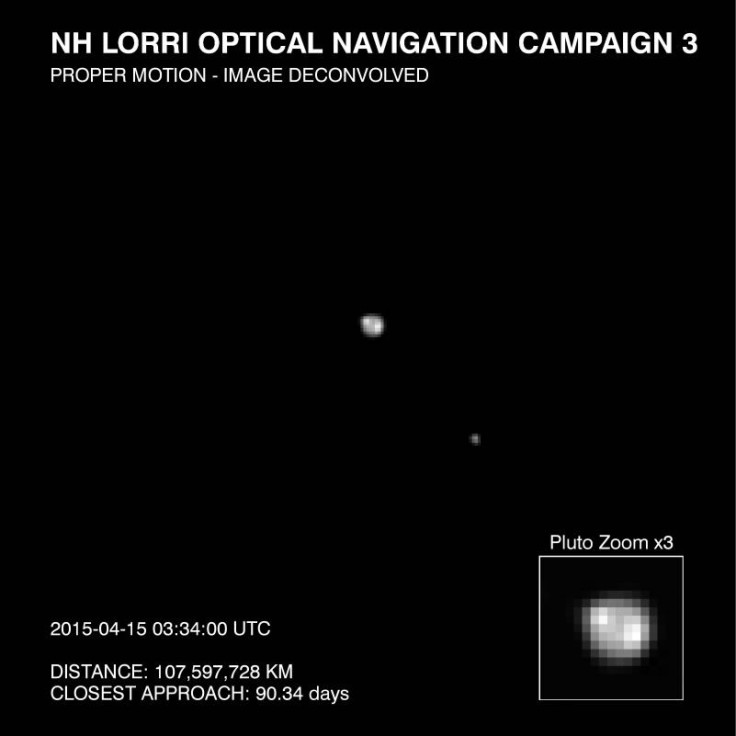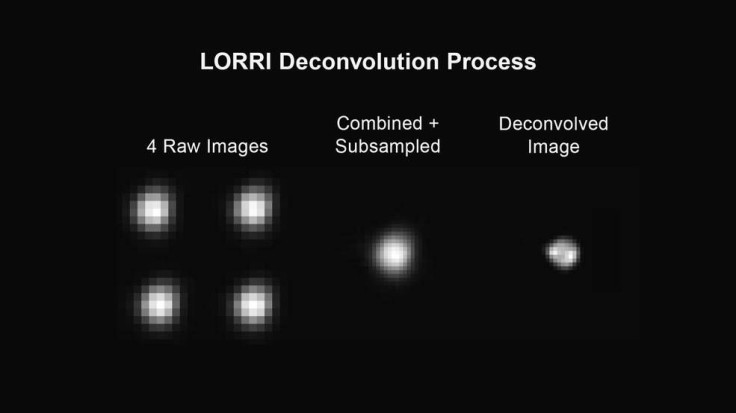NASA's New Horizons Spots Possible Polar Ice Cap On Pluto

With less than three months left for its historic flyby, NASA’s New Horizons space probe has detected what might possibly be a polar ice cap on Pluto. The latest images, captured using the telescopic Long-Range Reconnaissance Imager (LORRI) in April when the probe was approximately 70 million miles from the dwarf planet, show bright and dark features on its surface.
“As we approach the Pluto system we are starting to see intriguing features such as a bright region near Pluto’s visible pole, starting the great scientific adventure to understand this enigmatic celestial object,” John Grunsfeld, associate administrator for NASA’s Science Mission Directorate in Washington, said in a statement.
Given its distance from the sun, Pluto, which was demoted from the position of a planet in 2006, is shrouded in darkness. At its average distance, sunlight takes about 5.5 hours to reach the dwarf planet, and for years, astronomers have struggled to discern features on its surface.
“After traveling more than nine years through space, it’s stunning to see Pluto, literally a dot of light as seen from Earth, becoming a real place right before our eyes,” Alan Stern, New Horizons' principal investigator at Southwest Research Institute in Boulder, Colorado, said in the statement, adding that the images obtained so far already show that Pluto’s surface is much more rich and dynamic than previously believed. These details would become much clearer when the New Horizons probe passes over Pluto’s surface on July 14.
The series of photographs -- captured in a span of over six days between April 12 and April 18 -- also show Pluto’s largest moon, Charon, rotating in its 6.4-day long orbit.

“We can only imagine what surprises will be revealed when New Horizons passes approximately 7,800 miles (12,500 kilometers) above Pluto’s surface this summer,” Hal Weaver, the mission’s project scientist at the Johns Hopkins University Applied Physics Laboratory (APL) in Laurel, Maryland, said in the statement.
© Copyright IBTimes 2024. All rights reserved.












